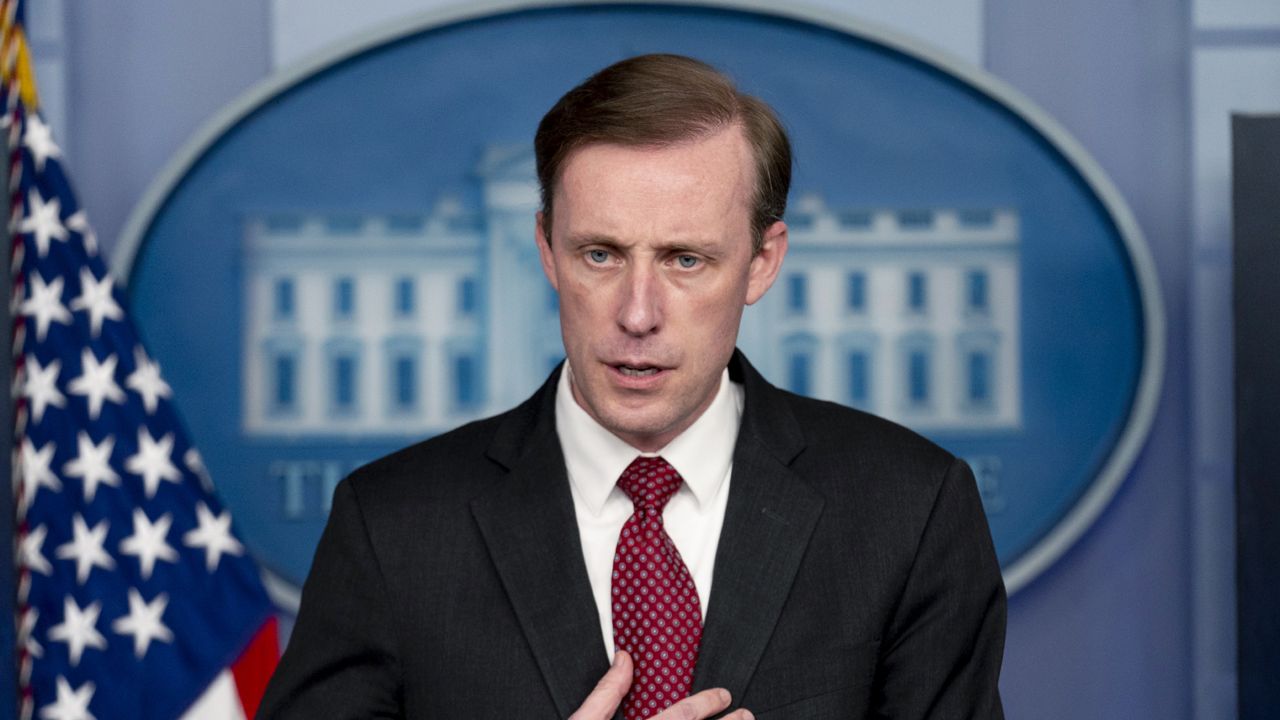The United States and NATO rejected key Russian security demands for easing tensions over Ukraine but left open Thursday the possibility of future talks with Moscow on arms control, missile deployments and ways to prevent military incidents between Russia and the West.
The decisions came at a meeting of the NATO-Russia Council, the first of its kind in over two years. That Russia’s delegation did not walk out of the talks and remained open to the prospect of future discussions after having its main positions rebuffed were seen as positive notes in a week of high-level meetings aimed at staving off a feared Russian invasion of Ukraine.
The U.S. and its allies are "ready either way" should Russia comply with their requests, national security adviser Jake Sullivan said during a press briefing Thursday.
"We continue to work with allies and NATO on changes in force posture and capabilities, especially on NATO's eastern flank," Sullivan added. "We have been very clear with Russia on the costs and consequences of further military action or destabilization in Ukraine."
The U.S. would like to continue with diplomacy, Sullivan added, but said there are no planned dates for future talks.
Sullivan also responded to recent comments from Russia's Deputy Foreign Minister Sergei Ryabkov, who on Thursday said he could “neither confirm nor exclude” the possibility of Russia sending military assets to Latin America if the U.S. and its allies don’t curtail their military activities on Russia’s doorstep.
"That wasn't raised in discussions at the strategic stability dialog," Sullivan said, calling Ryabkov's comments "bluster" and nothing more. "If Russia were to move in that direction we would deal with it decisively."
Russian President Vladimir Putin wants NATO to withdraw its troops and military equipment from countries that border Russia, which include Ukraine but also NATO allies like Estonia, Latvia and Lithuania. Putin also asked for the 30-nation military alliance to agree not to admit any more members.
Speaking after the meeting at NATO headquarters in Brussels, U.S. Deputy Secretary of State Wendy Sherman reaffirmed that some of Putin’s security demands “are simply non-starters.”
“We will not slam the door shut on NATO’s open-door policy,” she told reporters after almost four hours of talks. “We are not going to agree that NATO cannot expand any further.”
The meeting was called as an estimated 100,000 combat-ready Russian troops, tanks and heavy military equipment are massed near Ukraine’s eastern border. The buildup has caused deep concerns in Kyiv and the West that Moscow is preparing for an invasion.
Russia denies that it has fresh plans to attack its neighbor and in turn accuses the West of threatening its security by positioning military personnel and equipment in Central and Eastern Europe.
While noting that “escalation does not create optimum conditions for diplomacy, to say the least,” Sherman also expressed optimism following the Brussels meeting given that Moscow did not dismiss the idea of further talks.
NATO Secretary General Jens Stoltenberg, who chaired the meeting, said NATO nations and Russian envoys both “expressed the need to resume dialogue and to explore a schedule of future meetings.”
Stoltenberg said NATO is keen to discuss ways to prevent dangerous military incidents or accidents involving Russia and the Western allies, reducing space and cyber threats, as well as setting limits on missile deployments and other arms control initiatives.
But Stoltenberg said any talks about Ukraine wouldn’t be easy. Russia annexed the Crimean Peninsula from Ukraine and backed a separatist insurgency in Ukraine’s eastern industrial heartland in 2014. In the years since, the fighting has killed more than 14,000 people.
“There are significant differences between NATO allies and Russia on this issue” of Ukraine’s potential NATO membership, Stoltenberg told reporters after what he said was “a very serious and direct exchange” with Russian Deputy Foreign Minister Alexander Grushko and Deputy Defense Minister Alexander Fomin.
Stoltenberg underlined that Ukraine has the right to decide its future security arrangements and that NATO would continue to leave its door open to new members.
“No one else has anything to say, and of course, Russia does not have a veto,” he said.
